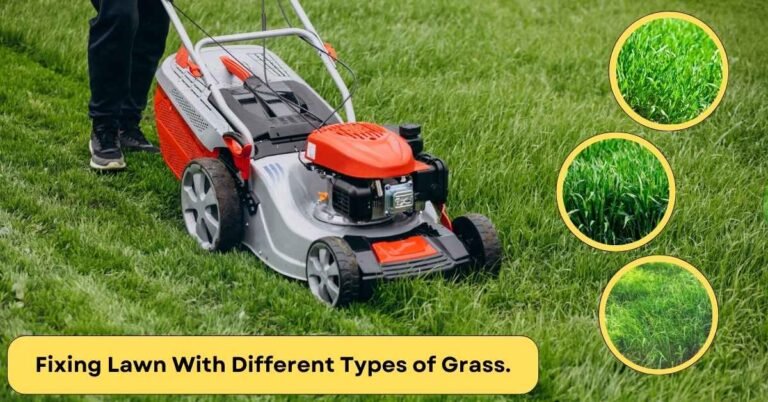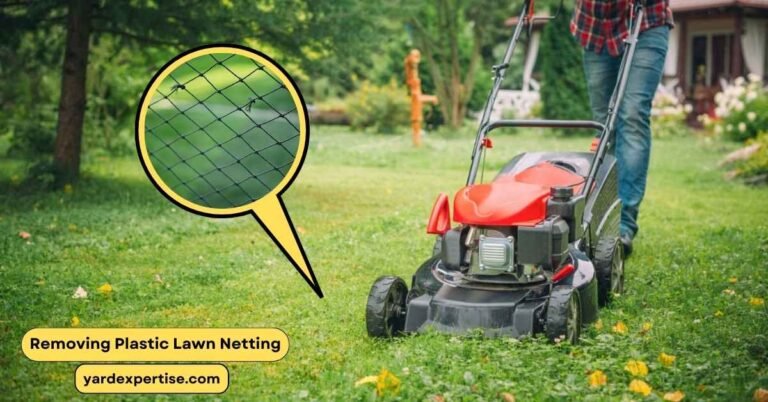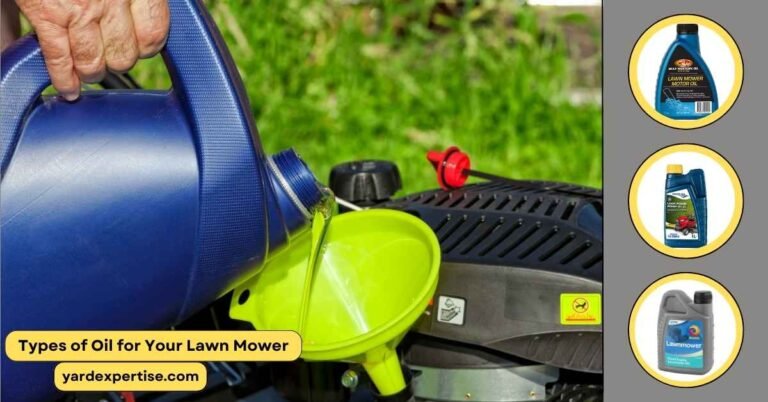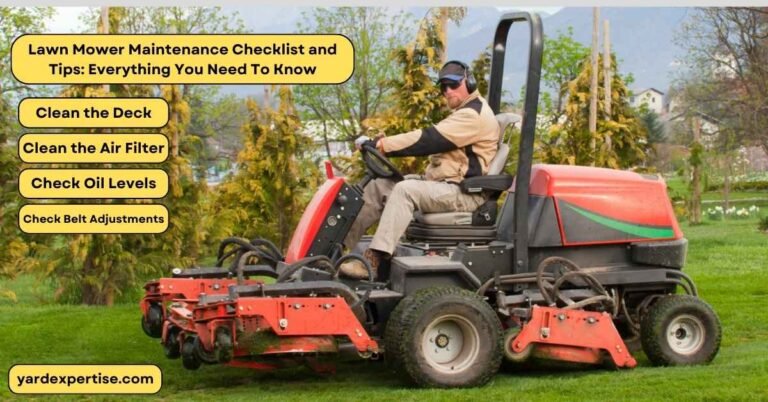Mower Discharge Chute up or Down: Making the Right Choice for Your Lawn

Mower discharge chute is usually located on the right side of the mower’s deck and utilizes the clockwise motion of the blades to discharge the grass chippings away from the mower. This helps to keep the mowing deck clean from building up dirt, grass clippings, and other debris around the blades and the deck and it also helps to distribute the mulch around the lawn for fertilizing the soil.
Mower discharge has two settings on it which are up and down. In the up setting, the grass clippings are distributed away from the mower to help the user mow the lawn more efficiently and in the down setting, the grass clippings are discharged close to the mower to help with the mulching process.
Both settings come with several benefits and demerits and it is up to the user to choose which setting will help them the most in their mowing activities. You should choose the correct setting keeping in mind several factors such as the grass height, moisture level of the grass, type of the grass, mulching necessities, lawn aesthetic, environmental factors, and so on.
Mower Discharge Chute Up
Putting the mower discharge chute in the up setting means that the discharge chute will discard the grass clippings away from the deck and the mower to the side.
This setting is usually the norm for trimming wet and tall grass because trimming such grass with the discharge chute being down will cause the grass clippings to clamp together and jam the blades and clog the deck.
The benefits of installing the mower discharge chute to throw the clippings upwards are given below.
- Grass clippings are discharged to the side and keeps the blades from jamming.
- The deck remains clean and unclogged.
- This setting is especially beneficial if the grass is wet as wet grass tends to clamp together easily around the blade and the deck.
- Blades can rotate more easily and thus the engine does not stall frequently.
But keeping the discharge chute up all the time might not be beneficial for your mowing activities and can cause problems. These are discussed below.
- Grass clippings are blown all over the lawn which can be difficult to clean up afterwards.
- This setting does not return the grass clippings to the soil which is necessary for nutrients to fertilize the soil.
- This setting is not suitable if you are trying to add mulch to the soil.
Mower Discharge Chute Down
Setting the mower discharge chute to discard the grass clipping downwards is a useful method of making sure that the grass clippings return to the soil and fertilize it properly.
This method is mostly used when the grass is shorter and dry and especially when the user is mowing the grass to spread the mulch all over the lawn. The benefits of using the down setting on the discharge chute is given below.
- Dry grass clippings do not easily get clumped together and jam the blade so this method is perfect for trimming dry and short grass.
- Since the grass clippings are thrown downwards and get assimilated with the soil, it saves the user from cleaning the lawn again after mowing.
- The mulch is spread evenly around the lawn and it fertilizes the soil.
- This method is especially useful while trimming a lawn that has a lot of maple and oak leaves as it adds the mulching of these leaves directly to the soil and enriches it.
But this method is not suitable for all usage. The downsides of this setting is discussed below.
- This method can clog the blades and make the deck dirty if the grass is wet and too high.
- Grass clippings can also cause jamming issues in the internal parts of the mowing deck such as the drive belts and can cause the engine to stall.
Considering Factors for the Right Position
There are some factors that every homeowner and garden enthusiast must consider when they are choosing the up or down position for their mower discharge chute. These are the grass height, lawn health, aesthetics, environmental consideration, and post mowing clean ups. All of these are discussed below.
Grass Height and Growth Rate
Grass height is the first factor that users should consider when choosing the setting on their mower discharge chute. The mower discharge chute should be put in upwards settings if the grass height is too high.
This is because long grass clippings have the tendency to clamp together and clog the blades, the deck, and even the chute itself. Growth rate of the grass is another factor that should be considered as upwards setting does not help to provide much nutrition to the soil and it hinders growth.
During the summer and spring season when the grass is growing rapidly, upwards setting is perfect for mowing the grass. But during the spring season when the grass is growing slower, the user should choose the downwards setting to help the lawn gather more nutrients to fertilize the soil and amplify the grass growth rate.
Lawn Health and Soil Fertility
Soil fertility is another factor that the homeowners need to keep in mind before choosing between up and down setting on the discharge chute. Up setting usually does not provide the lawn with the grass clippings that turn into fertilizer with time but the down setting does.
Choose the down setting if the soil fertility of your lawn is below your expectation as it will insert the grass clippings down in the soil and increase its fertility.
Desired Lawn Aesthetics
Users must also keep in mind about the lawn aesthetics when they are choosing the mower discharge chute setting. The up setting on the mower keeps the lawn cleaner than the down setting and if the users desire shorter cuts of grass on their lawns, they should choose the upward settings.
Environmental Considerations
Homeowners also need to consider the environmental factors when it comes to choosing the discharge chute settings. The downwards setting is generally better for the environment as the grass clippings return easily to the soil and enriches it with nutrients.
Upward settings often blow the grass clippings away from the soil and can land it on pavements or concrete where it remains for a longer period of time. So choose the downward setting if the grass is considerably dry enough.
Post-mowing Cleanup Time and Resources
Cleanup time is another factor to be considered as it has direct relation to the setting of the discharge chute. Upward settings on the discharge chute blows the grass clippings away from the mower and needs to be cleaned afterwards to preserve the aesthetics of the lawn.
On the other hand, downward setting makes sure that the mulch returns to the soil so there are considerably less grass clippings lying around the lawn that require post-mowing cleanup but this setting can make the blades and the underside of the deck full of grass clippings. Clean the underside of the deck, the blade, and the drive belt after cutting grass with the mower discharge chute set at the downward setting.
Best Practices for Effective Mower Discharge Chute Use
Mower discharge chute makes it easier for the user to discharge the grass clippings away from the mower but users must follow some basic guidelines while using them. Always make sure that the grass clippings that the mower discharge chute is discarding is not blowing all over the lawn because of air and creating a disastrous situation.
Adjust the speed accordingly to make sure that the grass clippings do not fly everywhere. Choose the setting considering all the factors mentioned above and clean the discharge chute thoroughly after every usage. Make sure that the discharge chute is not getting clogged because of grass clippings accumulating in it and clean it in between operations if it gets too clogged up. Make sure to empty the chute bag at regular intervals to avoid overloading it with grass clippings.





